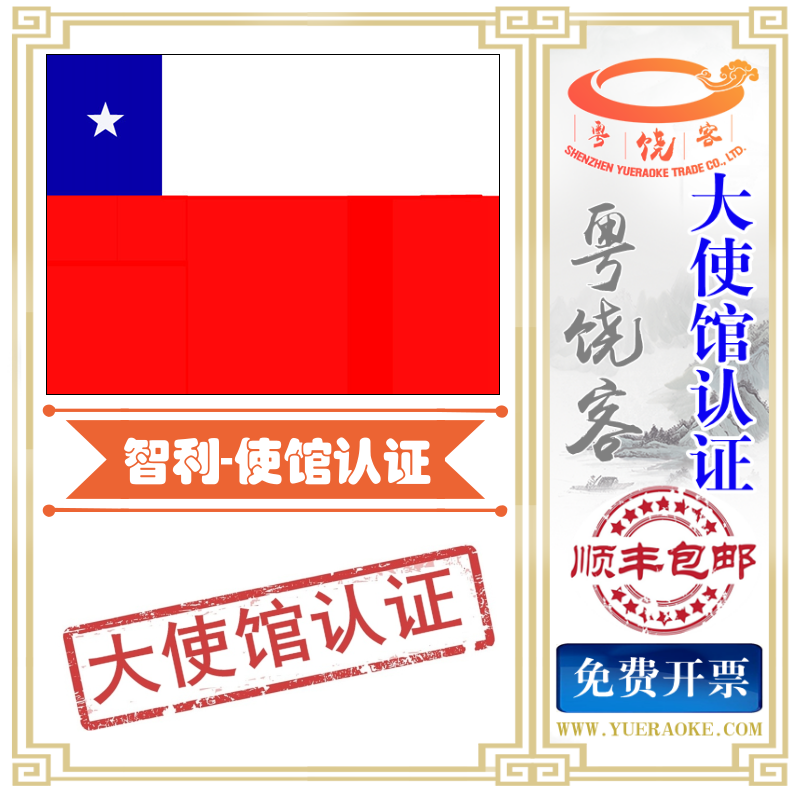智利清关单证大使馆认证领事馆加签贸促会认证
智利清关单证大使馆认证领事馆加签贸促会认证
智利清关单证大使馆认证领事馆加签贸促会认证
- Detail
- Parameters
foreign trade policy
Chile pursues trade liberalization policies. In Chile, any natural and legal person can operate import and export business as long as they are registered with the Central Bank. There is no limit to the registered capital. Except for military supplies, there are no restrictions on export products and export destinations. Export of non-traditional goods. Exporters can obtain tax rebates of 10%, 5% and 3% of the FOB price according to their export volume and different products.
Chile basically imposes no restrictions on import trade. The import license system is implemented. For imported goods with a contract value (FOB) of more than 3,000 US dollars, after signing the import contract and before the goods are shipped, an import license must be applied to the Central Bank of Chile. Except for special circumstances, the license can generally be obtained within 3-4 days after the businessman submits the application. Merchants get the import license, which means that the central bank guarantees to provide enough foreign exchange. The importer can notify the exporter to load the ship after obtaining the license. If the date of shipment is earlier than the date of issuance of the license, a high fine will be imposed upon the arrival of the goods. If the two dates are the same, no fine will be imposed.
Currently, Chile's foreign trade accounts for around 23% of its GDP. Mineral products have always been Chile's most important export product. Especially copper ore products. In 1998, Chile's total import and export volume was US$32.286 billion, of which US$14.895 billion was exported and US$17.391 billion was imported. The main export products are mineral products, fishmeal, wood, pulp, fruit, wine, salmon and other products, and the main import products are petroleum, natural gas, automobiles, mechanical equipment and their spare parts, edible oil and daily consumer goods.
Tariff and non-tariff management
In terms of import management, Chile mainly implements tariff management. At present, a single tariff is implemented, and the tax rate is 10%. Imported goods are subject to 10% tariff and 18% value-added tax according to CIF price.
Some imports are subject to surcharges on top of the 10% duty:
1. Second-hand goods are subject to an additional tax of 50% of the import duty amount.
2. Air cargo is subject to a tax of 2% of the customs duty on imported goods.
A luxury tax of 50% is levied on certain expensive consumer goods. Liquor tax, whose tax rate varies by product, such as 70% for whiskey. Liquor 30%, pisco 25% etc. Tobacco tax is 42.9% for cigarettes and 46% for cigars. And an additional 10% surtax is levied. Car tax, determined by cylinder capacity and luxury.
In terms of non-tariff management, in the trade of goods, the Animal and Plant Quarantine Bureau is responsible for supervising the import and export of live animals, and responsible for supervising the import of alcohol, alcoholic beverages and acetic acid. Responsible for supervising the import of fertilizers, pesticides and the import of animals and plants and their products and by-products. Import of fish and aquatic products. The import of medicine and food, and the import of weapons, radioactive substances, films, and video tapes are supervised by the Ministry of Fisheries, the Ministry of Health, the Nuclear Energy Commission, the State Border Bureau, and the Film Classification Committee. All the above products are subject to import customs clearance. Visas and approval documents from the relevant regulatory authorities are also required. In a small number of areas of trade in services, Chile has imposed a small number of market access restrictions.
Chilean trade customs
Chilean businessmen are generally accustomed to seeing the deal through. There is often no business without samples, so the sales team in Chile must bring samples. Bulky mechanical products and tools must have samples. Mechanical products must have performance specifications.
Merchants generally accept trade terms paid by letter of credit. If a sight L/C is used, attention should be paid to stating the shipping date and negotiation period on the L/C. It is better to leave 15 days between the two dates to prevent trouble caused by expiration of the letter of credit. Usance letters of credit are subject to interest. It is best to print the names and contract numbers of major categories of goods on the letter of credit.
Chilean commercial banks can guarantee foreign exchange settlement after issuing the L/C. At present, Chilean BICI~ bank, Chilean bank, BANCO SOKNO bank, etc. have established business relations with Bank of China. If a Chilean businessman opens a letter of credit through a commercial bank that has no business relationship with Bank of China, the terms of confirmation by the bank of the third country should be added.
Merchants with good credit may also consider using D/P or D/A payment methods.
